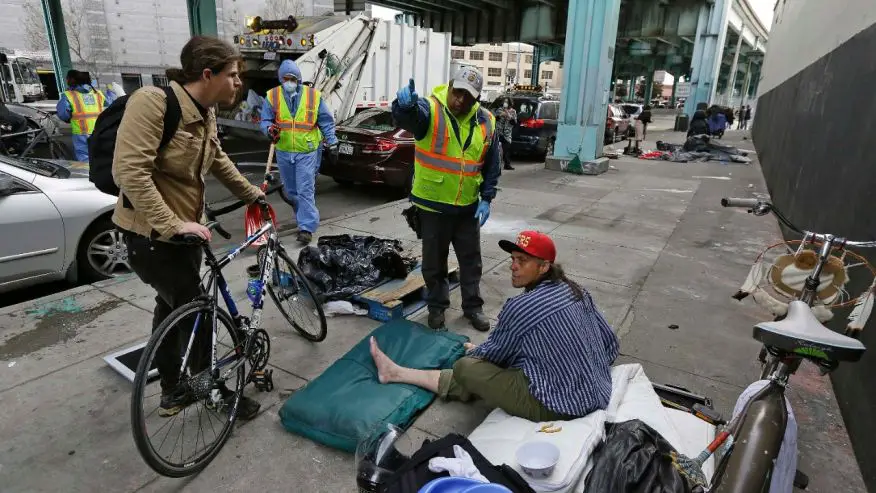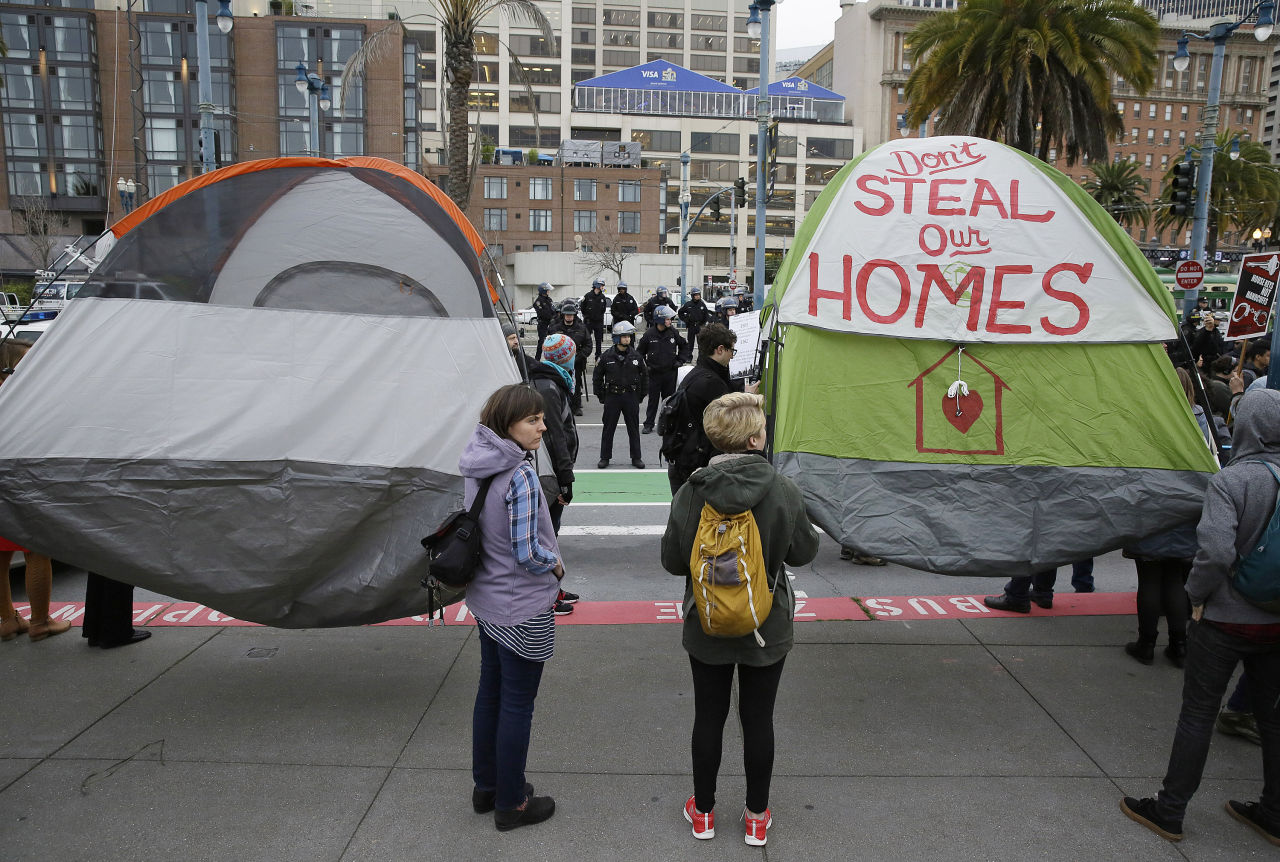Not many freshman orientations fully prepare you for the physical experience of college. That first tour of campus is surreal and disorienting and full of possibility: how will I make these paths mine? How will these buildings and roads and intersecting bodies become a part of my experience? You are quite literally dropped into it.
All of a sudden there are no rules, there are no parents, there is no proper breakfast time and there is no moral compass. Freshman year can feel like the whole universe has been reduced to the space between the dining and the chemistry wing.
It is easy to lose track of old priorities in favor of what is right in front of you: youth, academia and angst. Social problems and inequities, even when discussed in a classroom, become distant and divorced from the day to day. I grew up in San Francisco amidst a notorious homeless community, but I didn’t realize just how bad the situation had gotten until I left.
There are almost 7,000 people living in San Francisco right now without a home to call their own, and more than half of them are street-dwellers. Almost 40 percent of them are mentally ill and struggling with addiction, trauma or a combination of both. This prevents many of them from holding jobs and finding safe spaces to live, as well as stigmatizes them to the more fortunate.
I worry personally about the new San Francisco and our empathy. San Francisco has a homeless population not bigger than other cities, but more visible and more adjacent to our city’s wealthy downtown area. Just this year San Francisco hosted the Super Bowl. Downtown was bursting with locals and tourists eager to attend the music concerts and games, not the thousand-plus homeless that live in downtown, also known as District 6.
Instead of allocating proper housing, the homeless were given tents. And in the weeks leading up to the big game, hundreds of those tents were “swept” away and relocated. These sweeps also mean that Public Works can confiscate any and all property seized in the sweeps, leaving anyone worse off than they started. There has always been tension between the homeless and the rest of San Francisco, but now it’s really begun to come to blows.
There is a now-notorious letter written by a tech entrepreneur to San Francisco’s mayor and now-deposed police chief lamenting having to be confronted with poverty and suffering while he commutes to and from his expensive office and expensive apartment.
The letter takes on the approach many people living comfortably have: that homeless people are lazy and choose to let their lives degenerate while hardworking Americans who went out and got their education and pursued their dreams deserve their place here. There is so much I could say about that but I will not for the sake of objectivity.
But the letter brings to light a mentality too many people in the US have towards the 550,000+ people who will be sleeping on the street or in emergency housing tonight: they did it to themselves. And the thing is, they didn’t.
According to the National Alliance on Mental Illness, California cut almost $600 million in funding for mental health services between 2009 and 2011. San Francisco itself has also failed to provide enough affordable housing for not only the homeless, but also low-income and at-risk communities.
Approximately two thirds of San Franciscans rent their homes, and there are only approximately 22,000 units that are permanently affordable or public housing. The housing crisis, coupled with an influx of people who can afford landlord manipulation of the Ellis Act, means San Francisco is becoming more and more exclusive to live in.
It’s not all bad though, and there are people here who are working toward safe spaces and better resources to intervene with San Francisco’s homeless. Gavin Newsom, former mayor of SF, put a billion dollar plan into action to house our homeless back in 2004, the Ten Year Plan to Abolish Chronic Homelessness. Newsome’s approach to eradicating homelessness, a concept he know recognizes as impossible, has focused on creating supportive housing and crisis clinics rather than shelters or short term solutions.
Former city Supervisor and purveyor of Newsom’s plan Angelia Alioto says, “If you want to abolish homelessness, you’ve got to abolish the programs that support it.” I can’t say I entirely agree with this, but while 3,000 units of aforementioned supportive has been built, and over 19,000 people have been housed as a result of the Ten Year Plan, the homeless population numbers remain the same; the cycle continues. Numbers like these indicate that the problem doesn’t lie with individuals, but a landscape of inadequacies on the local, state and federal level.

Current Mayor Ed Lee has supported a pilot program called the Navigation Center, which has been publicized as a one stop shop for rehabilitating the homeless and preparing them for employment and permanent housing. The first image you see upon searching their domain is a long-scroll of portraits. These portraits are accompanied by short interviews, according to the “About the Artist” tab, are meant to dignify the homeless and shed light on the stories that lead to these situations; they call themselves ethnographers.
The list of services provided is extensive: from beds to showers, dog kennels to outpatient treatment and benefits support, the program does seem prepared to tackle the unique cases of the people they help. They say that the grouping of people creates support systems and networks of trust that better benefit treatment in the long run. However, there are only three people on the Staff page, and the center handles only 75 people at a time.
The program has only been in operation a year, so I can only speculate on how effectively the program will tackle homelessness in the long run. I am confronted with the shortcomings of my city daily as I go to work. The encampment near my house continues to swell.












